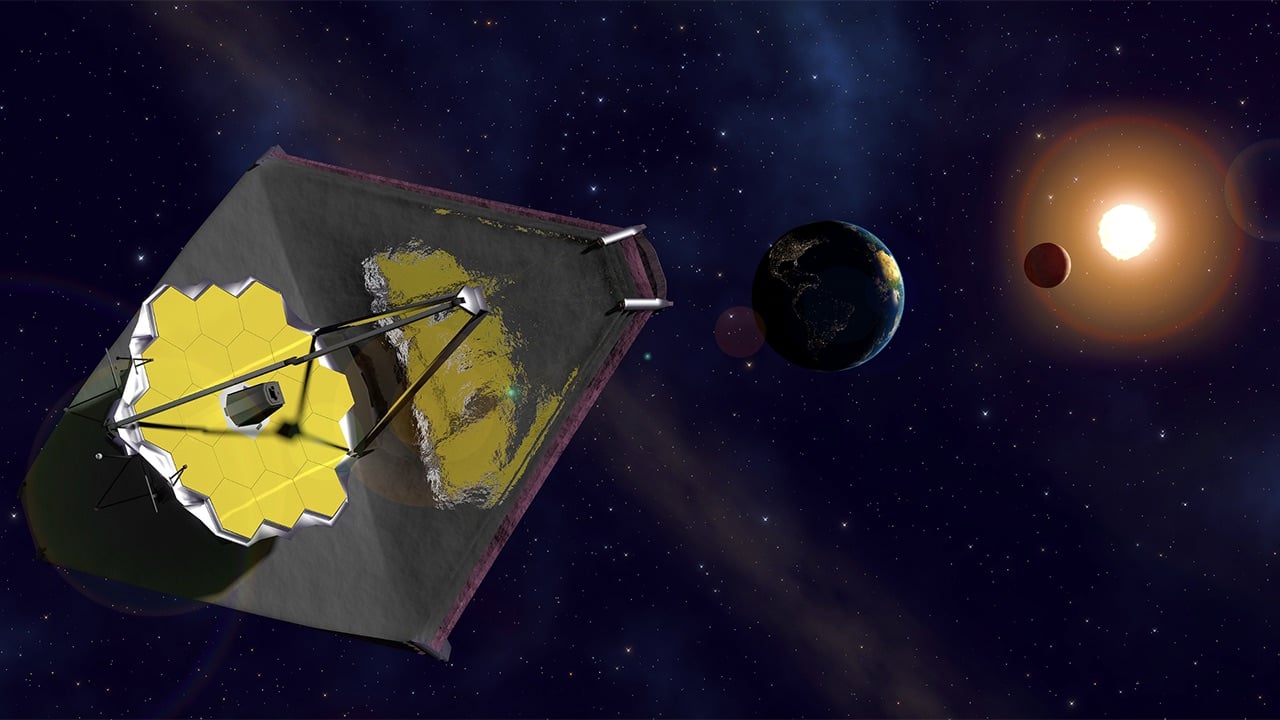
Image by Kevin Gill, from Flickr
Webb Telescope Discovers Elusive Ice In Space
Scientists using the James Webb Space Telescope (JWST) have made a new discovery. A type of ice previously only observed in labs has been found in space for the first time. The results of their observations were published this week in Nature Astronomy. This “fluffy ice” could hold the key to understanding the chemistry that led to life on Earth.
Normal ice has a tightly packed structure, but this interstellar ice is different. It’s less compact, similar to powdery snow. This allows some water molecules to have “dangling bonds.”
Imagine a water molecule (H2O) with two hydrogen atoms. In regular ice, both hydrogens are firmly linked to the central oxygen. However, in this unusual ice, one hydrogen might not be fully bonded, leaving it dangling outwards.
These dangling bonds create unique light signatures detectable in labs. However, these specific light frequencies are absorbed by Earth’s atmosphere, making it difficult to find them in space.
A team led by astronomer Jennifer Noble from Aix-Marseille University used the JWST’s powerful infrared spectrometer to peer into the star-forming region Chamaeleon I cloud, located roughly 500 light-years away.
They detected two specific light frequencies remarkably similar to those observed in lab-made dangling bond ice. One signature likely represents light reflected directly by the ice, while the other could be from ice interacting with other molecules like carbon monoxide.
Understanding how this special ice behaves is crucial for comprehending the formation of planets and the complex organic molecules essential for life.
“Our results provide insights into the initial, dark chemistry stage of the formation of ice on the interstellar dust grains that will grow into the centimeter-sized pebbles from which planets form in disks,” said Melissa McClure, an astronomer at Leiden Observatory in the Netherlands and the principal investigator of the observing program, as well as the lead author of the paper detailing this discovery. “These observations open a new window on the formation pathways for the simple and complex molecules that are needed to make the building blocks of life.”
Martin McCoustra, who played a part in the first lab detection of dangling bonds in ice nearly 30 years ago, expressed excitement about this discovery. New Scientist reports how Martin emphasizes the importance of understanding these bonds: “These little icy snowballs are essentially the chemical nanofactories in which complex organic molecules can be made.”
This research is a part of the Ice Age project, one of Webb’s 13 Early Release Science programs. These observations aim to demonstrate Webb’s observing capabilities and help the astronomical community maximize the use of its instruments. The Ice Age team has already scheduled additional observations and aims to trace the journey of ices from their formation to the assembly of icy comets.


 Previous Story
Previous Story

 Latest articles
Latest articles 

Leave a Comment
Cancel